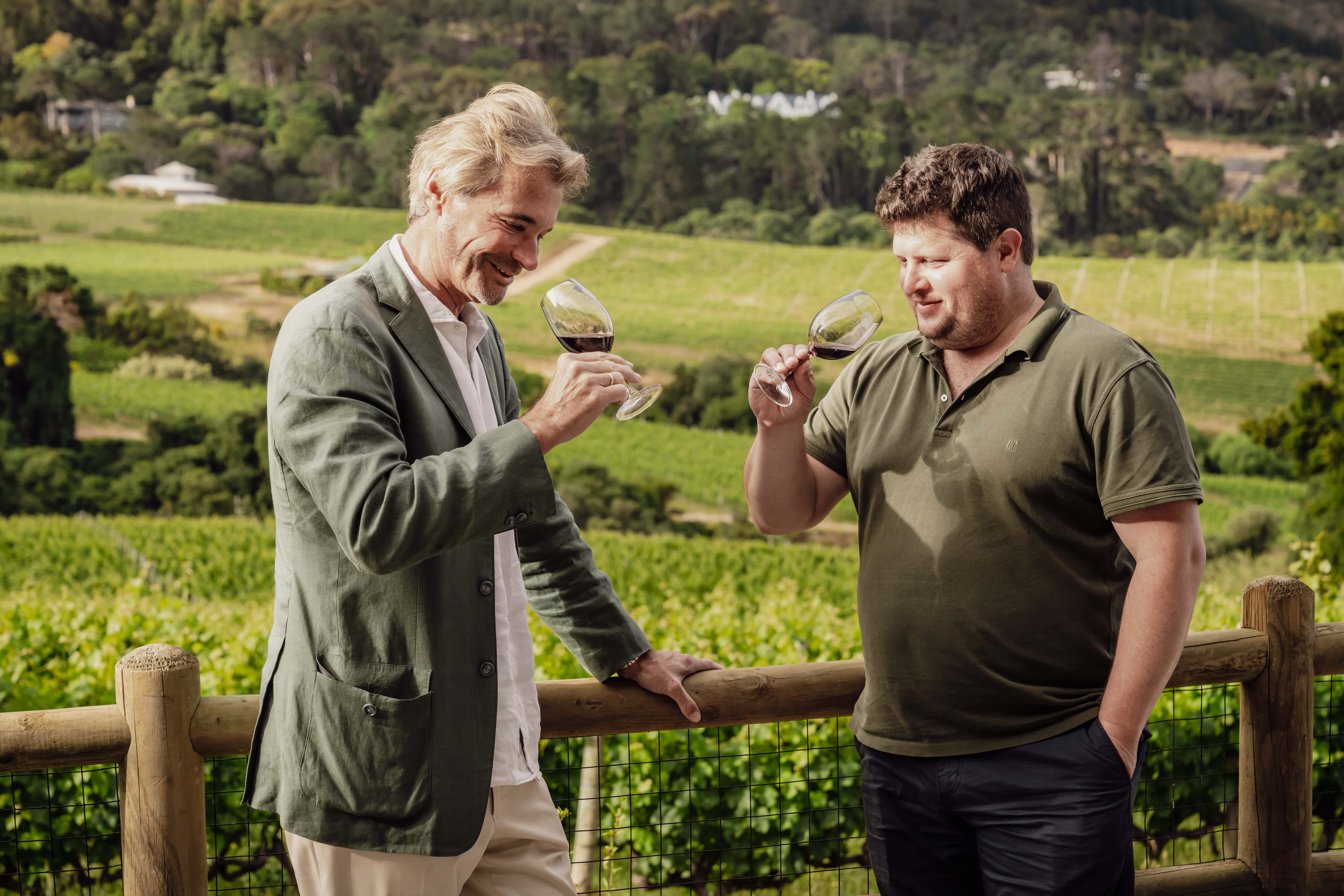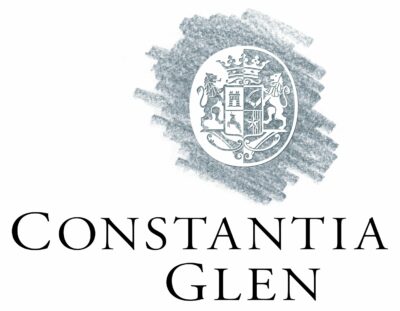ABOUT US
ABOUT US
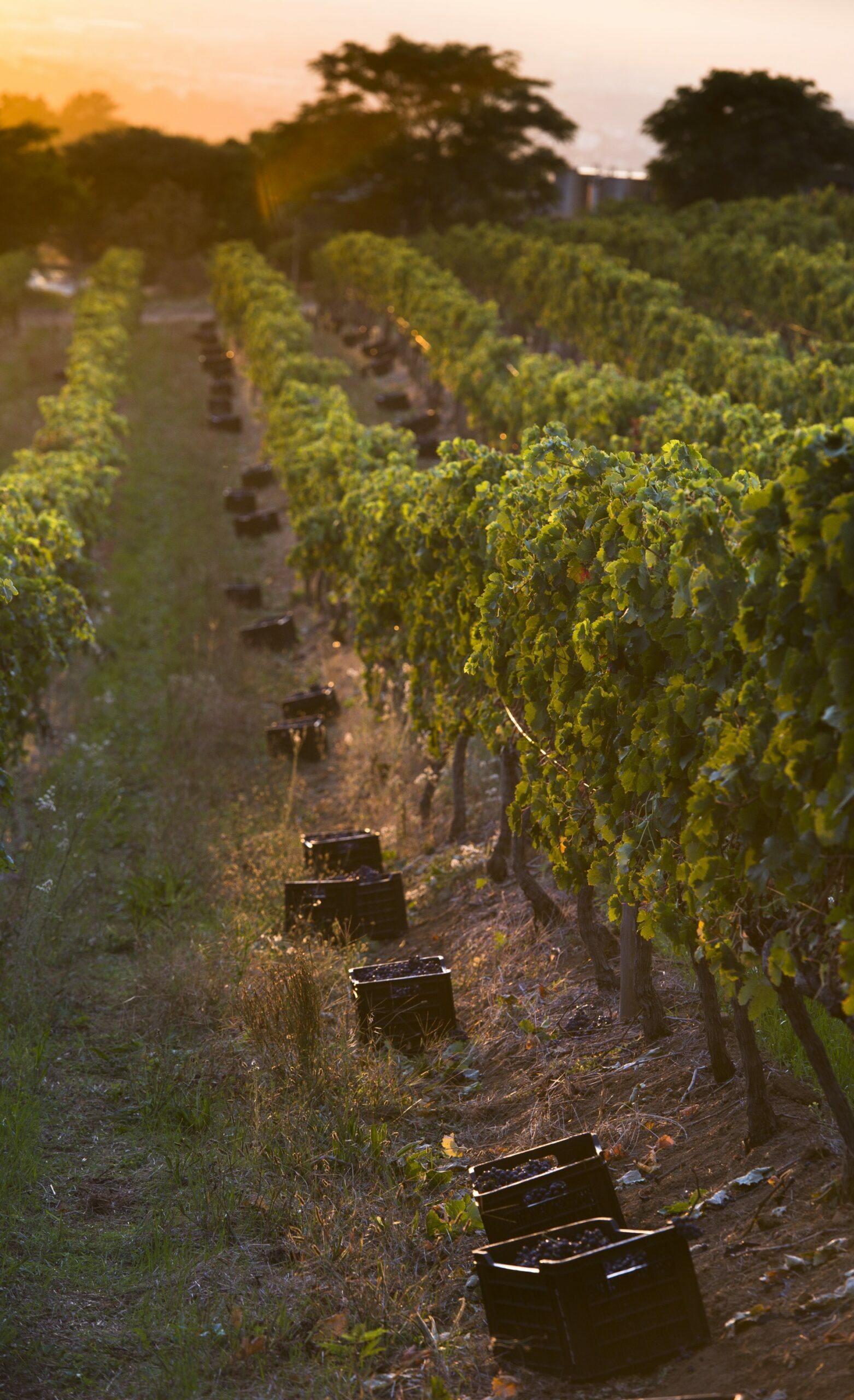
A LOOK BACK IN TIME
The History of Constantia Glen
The Constantia Valley is the oldest and most prestigious wine producing region in the southern hemisphere. This wine region’s unique combination of terroir and climate – with its cool maritime influence by the Atlantic and Indian Oceans – is ideal for producing world-class wines.
Our magnificently appointed wine estate, located on the upper reaches of the Constantiaberg, is one of the jewels of the Constantia Valley. Constantia is at the heart of South African wine making, with a proud winemaking history dating back to 1685, when Simon van der Stel first made wine on his farm called Constantia. After van der Stel’s death in 1712, the Constantia farm was split into three properties known today as Groot Constantia, Klein Constantia and Buitenverwachting.
Our 60 hectares of land – known today as Constantia Glen – would have been far too difficult to farm in the 1700’s. It was most likely used for livestock grazing for the first hundred years of Constantia’s history. Originally called Benydendal, and later Klein Benydendal, in 1813 the farm was registered to its original owner, Johannes Gregorius van Helsdingen, who was the first owner to plant vines on the farm. By 1832, when his nephew, Johannes Frederick, inherited the property, it was a productive farm under 15 000 vines. Not much is known about the 11 years that followed, which saw a rapid succession of ownership until 1843, when Sebastiaan Valentyn van Reenen, a grandson of the famous Dutch VOC merchant family – the Cloete family – bought the farm and renamed it Glen Alpine.
Under the van Reenen family, Glen Alpine prospered and became a renowned wine estate visited by many callers to the Cape including Queen Victoria’s son, Prince Alfred. In 1851 the land was sold once more on auction and the property changed hands several times over the next 100 years, during which time the land was used primarily for small scale fruit farming, a small vineyard and dairy. However, the farm mostly became overgrown with forest vegetation.
In 1960, the Waibel family from Austria bought Glen Alpine farm and set about building their homes on the estate. At the same time, they set up a large textile business, called BMD Knitting Mills, in the Cape. Although the family lived on the farm, the land was not commercially farmed from 1960 until 1995 when it became an elite stud farm for champion Red Angus breeding stock. Around about 1998, Dieter Waibel, together with his son Alexander and son-in-law Gus Allen, began planning to bring the land back to its original function as a wine farm.
In January 2000, following a devastating wildfire on the Cape Peninsula that destroyed most of the vegetation on the farm, and required that the Red Angus cattle had to be evacuated, the decision was made to perform extensive soil tests around the property. The positive outcome was that the first vineyards were planted in September 2000, with the majority being planted in 2001 to make up the farm’s 29 hectares planted to wine grapes today. The 60 hectares of undulating landscape overlooking False Bay has been under the custodianship of the Waibel family, first as rolling forest land, then a Red Angus cattle stud before returning to its historic wine growing roots, culminating in renaming the farm Constantia Glen when the first wine was produced in 2005.
Evidenced by the property’s rapid change of ownership from first registration in 1813 until 1960, these upper slopes of the Constantiaberg are not easy to farm, but the rewards have come aplenty for the Waibel family, whose dedication and steadfastness to produce high quality wines has proven to be a success from this unique position overlooking the Constantia Valley. Having owned the farm since 1960, they are the longest standing custodians of this land since it was first registered as a farm in 1813.
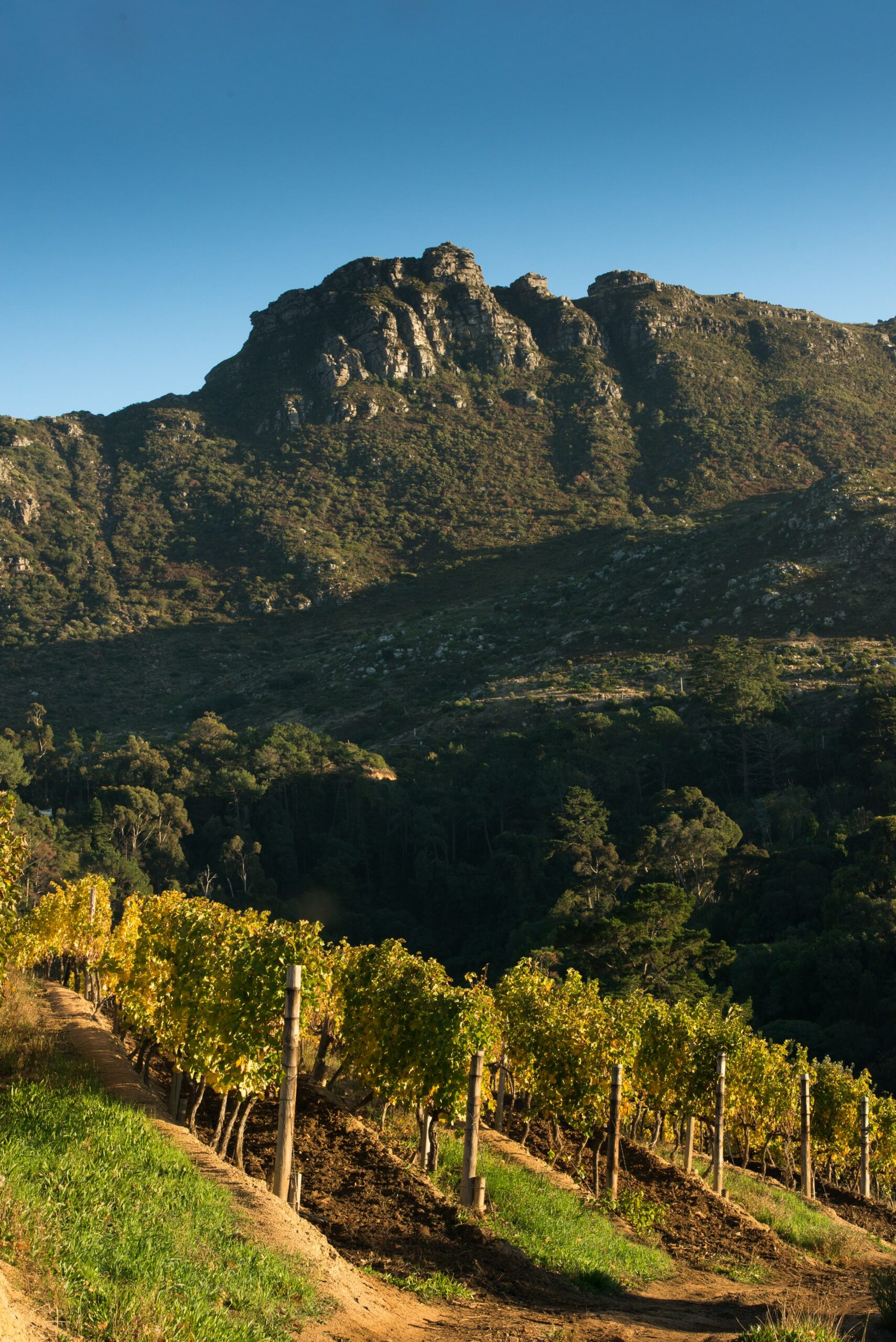
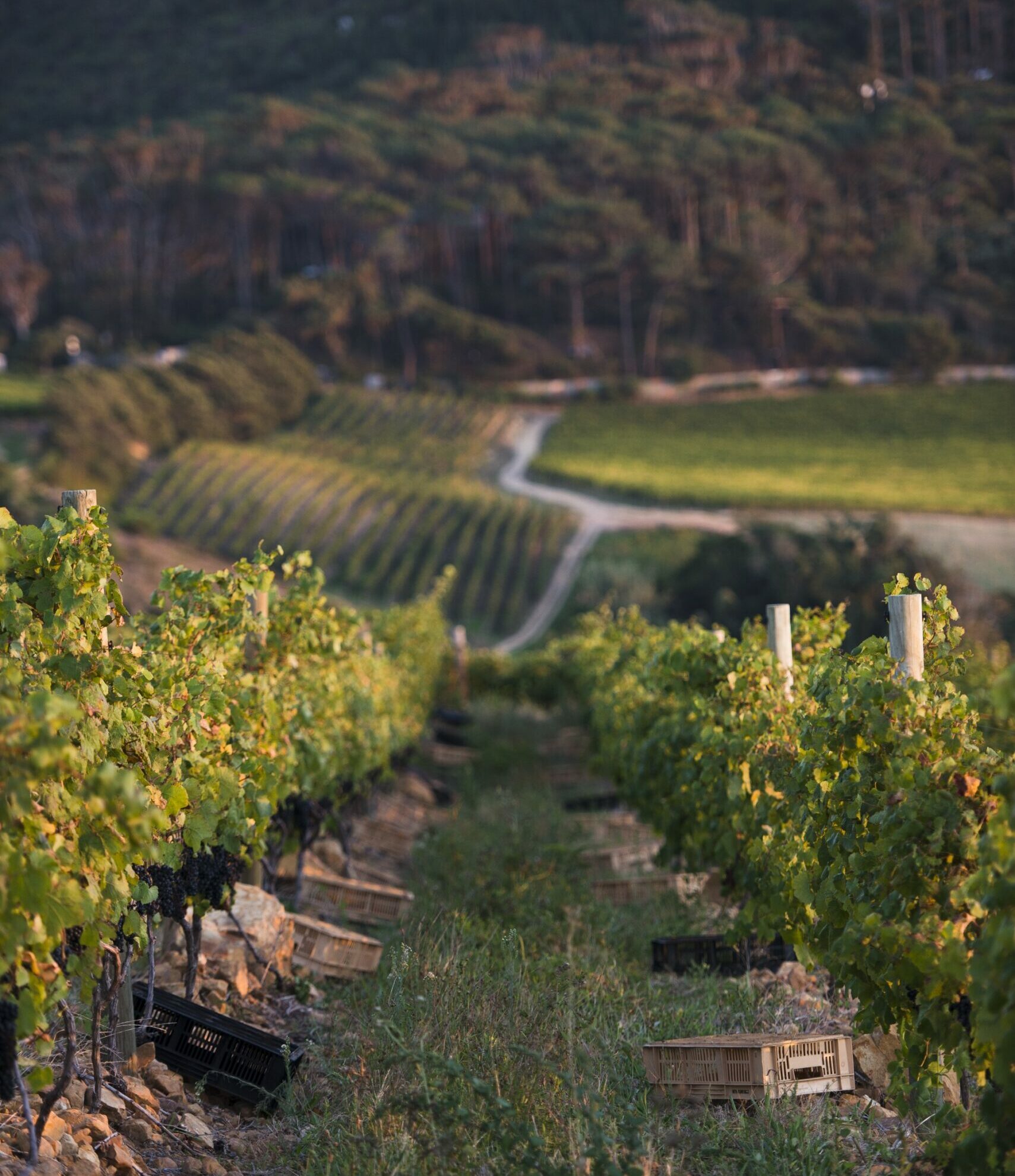
LOCATION
Our Unique Location
Ideally situated below Constantia Nek, just minutes from the bustling Cape Town city centre, Constantia Glen is a picturesque boutique wine estate producing ultra-premium, cool climate wines.
Constantia Glen has a unique position, cradled between the Constantiaberg and Table Mountain (a World Heritage Site) ranges, with predominantly north-east facing slopes. This singular location allows for exposure to late afternoon sun, ideal for the slow ripening that shapes our classically expressed wines.
Decomposed granite and Table Mountain sandstone are the dominant soil types that lend minerality and the elegant character to our wines. The high-water retention found in our rich clay sub-soils allow for sustainable dryland cultivation, while ecologically sound practices include biological insect and pest control by means of natural predators. Our intrinsic terroir footprint is echoed in the unique insignia embossed on every Constantia bottle.
At Constantia Glen we understand that fine wines are made in the vineyard. The 60-hectare property, situated at an altitude of 130 – 270 metres above sea level, has a mere 29 hectares under vine with production of Constantia Glen wines limited to 120 000 bottles per annum. The undulating foothills of the Constantiaberg command hand harvesting practices, underpinning the hand-crafted quality of our wines.
Cold maritime breezes from the Atlantic, directly off False Bay, regulate the annual average temperature at a mild 16⁰C. Dryland cultivation under these cool climatic conditions results in slow ripening, low yields with exceptional grape quality and flavour concentration. This makes for crisp white wines and fresh, vibrant reds of great elegance and structure, setting us apart from other South African wine producing areas.
